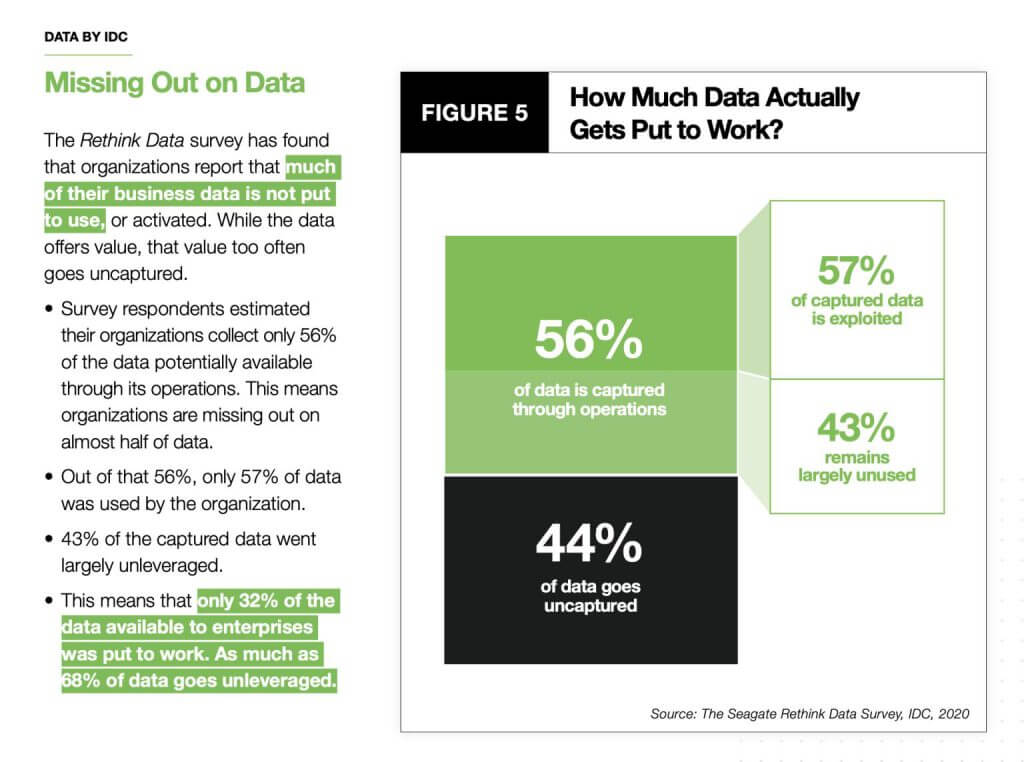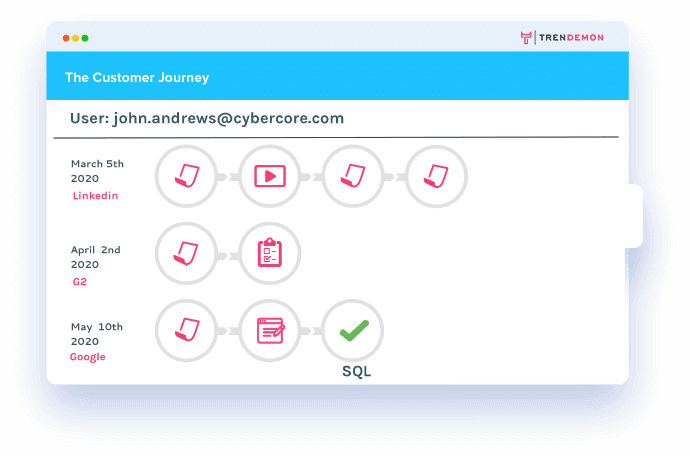You can no longer afford to leave Content Marketing ROI to luck – How to orchestrate your customers’ journeys

By: Halel Porat, Trendemon COO and Head of Customer Success
The Sudden Death of Field Marketing
The new reality of the COVID-19 pandemic has set the marketing industry on its ear in 2020. Events, shows, and field marketing are all out the window for B2B companies, replaced by ebooks, case studies, and webinars as just about everyone works from home.
To overcome these new challenges, marketing teams are rethinking their strategies, and most shift to focusing on their own media. However, in order to effectively accomplish this transition from the field to the screen, they must also understand how their visitors behave and what is causing them to engage and convert. This is why understanding your true customers’ journeys is crucial for knowing your content marketing ROI. That knowledge is also essential for improving your customers’ online journeys and experiences.
Your customers’ journeys are now almost exclusively online
The customer journey is the path that your potential customer takes from their first interaction with your brand or product up until the time they act on their decision to become a customer. Consider how much that journey has changed over time, and particularly in the last four months with the rise of the coronavirus and the necessity for so many people to stay at home most of the time.
Back in the summer of 2019, if you were in the business of selling Internet of Things (IoT) sensors to big-box appliance manufacturers, imagine how your customer’s journey would go:
You’d send them videos and tech specs, meet with them at industry events, set up visits to their factory or showroom to demonstrate how your sensors would interact with their appliances. Maybe invite them to your town for a day trip or a full work week to show them your process, meet your people. Finally, make sure they get plenty of tasty meals and a few sight-seeing trips thrown in to sweeten the deal.
An overwhelming majority of those steps on the customer journey are now out the window, replaced by what you can accomplish in the digital environment. Your content must take the place of these in-person meetings and be able to both show and tell what your product/service does, what sets it apart from the rest, and how it solves the customer’s problems.
In the past few months since the pandemic started, I have escorted dozens of customers. We discuss how to understand their potential buyers, and how to use content as part of their updated strategies. Content today plays a crucial role in impacting your funnel. From top of funnel campaigns, all the way to existing customers. Here are some of the challenges we are seeing and the opportunities we are helping them uncover.
Exceptional experiences start with exceptional insights
A recent study by IDC for Seagate (HT David Raab) shows that 68% of organizations data is wasted (only 57% is captured and out of it, 43% isn’t used) :

But as we can see, capturing data is only half of the story. Without effective ways to put it to use, it’s as good as uncaptured data.
Content marketing offers a unique opportunity to capture and operationalize valuable data. Data on the behaviour of your users, engagement and their topics of interest. A key challenge remains, which is how to measure your content marketing ROI.
A study by Forrester from 2019 shows that companies that deliver superior experiences generate 5.7 times more revenue than companies that don’t. Content is a central part of the experience your company can provide.
A main divide today between your company and your competition is going to come down to who can provide the better digital experience. To be able to do that, you first have to understand what your customers are really seeking and then be able to seamlessly serve it to them.
The 5 key steps for creating a superior digital customer experience through content
Here are the 5 key steps digital marketers should use to orchestrate their customers’ online journeys and experiences:
Step 1 – Measure the entire journey from initial touch to deep business goals
Be able to connect the dots from initial landing on your own assets down to the opportunity level in your CRM. Advanced marketers also connect it to existing customers Lifetime Value. The first task is to understand your customers journeys. Every industry is different, that’s why we start with benchmarks with our customers. Any web analytics app will be able to tell you about basic metrics like page views and numbers of visitors. However, to take the pole position in your industry, your company needs to acquire a deep understanding of the different paths their customers take. This is a critical part for those asking how to measure content marketing effectiveness.

Step 2 – Segment your traffic to audiences
Like solving any big hairy problem, it’s useful to break it down into digestible chunks. In our case it is the ability to create various audience segments that we can examine, compare and optimize independently. For example, ABM marketers can segment by industries, others segment by business goals, incoming sources or marketing automation attributions.

Step 3 – Breakdown the journeys to 3 stages – landing, nurture and conversion
Once segmented, it’s time to break it down into stages. Every journey can be broken down into 3 main stages.
Landing – meaning the first time they set foot on our own media.
Nurture – an engaged visitor that returned but still hasn’t reached any business goal,
Conversion – the last mile before a meaningful business event, either on site or within the marketing automation or CRM platform.

Step 4 – Matching the most relevant content with audiences
Next comes the matchmaking process of understanding which piece of content was most effective for which stage of the journey. This grouping of relevant items serves 2 purposes: 1 the ability to serve relevant content using personalization (step 5) but also, insight for the content teams on which types of content, media and topic resonate the most for every stage.

Step 5 – Serve the relevant items to the relevant people at the right stage.
This part of being able to personalize content journeys on your website usually involves a bit of wizardry. Basically, we want to be able to serve our potential customers visiting our site the most relevant content. That requires knowing which items they’ve consumed and which content is going to move them forward towards the company’s goals. In other words, effective personalization.

Rinse & Repeat.
Clarity trumps Complexity.
Yes, people are spending more time online. However, despite the growth in traffic, we also see less attention. With rising levels of stress and unrest, people have even less patience for confusing messages and less than superb online experiences.
Online experiences which were considered exceptional in normal days, are now becoming essential in our new normal.
Hence, it is even more critical for marketers today to understand whether their online messages and content resonate with their target audiences. Have they been successful at capturing attention and moving them into action. That is why more marketers are investing efforts on measuring the performance of content marketing.
The marketing B2B world has moved on. It’s time to move with it.